Cuntai Guan
BrainPro: Towards Large-scale Brain State-aware EEG Representation Learning
Sep 26, 2025Abstract:Electroencephalography (EEG) is a non-invasive technique for recording brain electrical activity, widely used in brain-computer interface (BCI) and healthcare. Recent EEG foundation models trained on large-scale datasets have shown improved performance and generalizability over traditional decoding methods, yet significant challenges remain. Existing models often fail to explicitly capture channel-to-channel and region-to-region interactions, which are critical sources of information inherently encoded in EEG signals. Due to varying channel configurations across datasets, they either approximate spatial structure with self-attention or restrict training to a limited set of common channels, sacrificing flexibility and effectiveness. Moreover, although EEG datasets reflect diverse brain states such as emotion, motor, and others, current models rarely learn state-aware representations during self-supervised pre-training. To address these gaps, we propose BrainPro, a large EEG model that introduces a retrieval-based spatial learning block to flexibly capture channel- and region-level interactions across varying electrode layouts, and a brain state-decoupling block that enables state-aware representation learning through parallel encoders with decoupling and region-aware reconstruction losses. This design allows BrainPro to adapt seamlessly to diverse tasks and hardware settings. Pre-trained on an extensive EEG corpus, BrainPro achieves state-of-the-art performance and robust generalization across nine public BCI datasets. Our codes and the pre-trained weights will be released.
crossMoDA Challenge: Evolution of Cross-Modality Domain Adaptation Techniques for Vestibular Schwannoma and Cochlea Segmentation from 2021 to 2023
Jun 13, 2025Abstract:The cross-Modality Domain Adaptation (crossMoDA) challenge series, initiated in 2021 in conjunction with the International Conference on Medical Image Computing and Computer Assisted Intervention (MICCAI), focuses on unsupervised cross-modality segmentation, learning from contrast-enhanced T1 (ceT1) and transferring to T2 MRI. The task is an extreme example of domain shift chosen to serve as a meaningful and illustrative benchmark. From a clinical application perspective, it aims to automate Vestibular Schwannoma (VS) and cochlea segmentation on T2 scans for more cost-effective VS management. Over time, the challenge objectives have evolved to enhance its clinical relevance. The challenge evolved from using single-institutional data and basic segmentation in 2021 to incorporating multi-institutional data and Koos grading in 2022, and by 2023, it included heterogeneous routine data and sub-segmentation of intra- and extra-meatal tumour components. In this work, we report the findings of the 2022 and 2023 editions and perform a retrospective analysis of the challenge progression over the years. The observations from the successive challenge contributions indicate that the number of outliers decreases with an expanding dataset. This is notable since the diversity of scanning protocols of the datasets concurrently increased. The winning approach of the 2023 edition reduced the number of outliers on the 2021 and 2022 testing data, demonstrating how increased data heterogeneity can enhance segmentation performance even on homogeneous data. However, the cochlea Dice score declined in 2023, likely due to the added complexity from tumour sub-annotations affecting overall segmentation performance. While progress is still needed for clinically acceptable VS segmentation, the plateauing performance suggests that a more challenging cross-modal task may better serve future benchmarking.
Towards Robust Multimodal Physiological Foundation Models: Handling Arbitrary Missing Modalities
Apr 28, 2025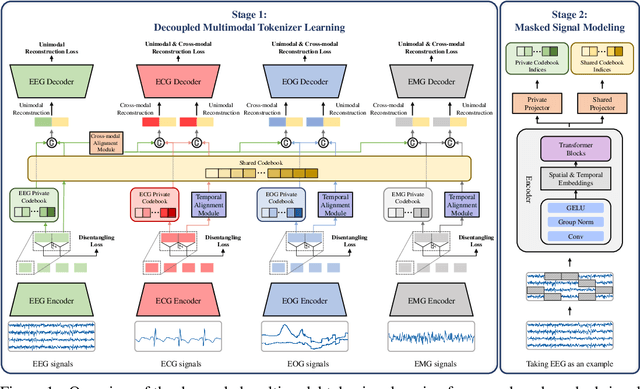


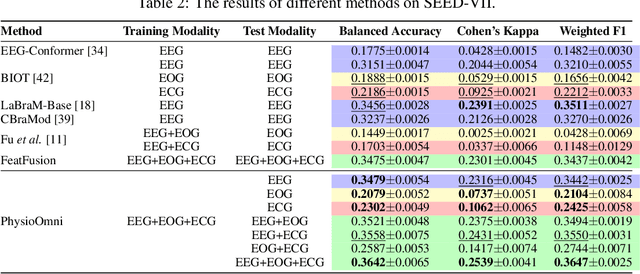
Abstract:Multimodal physiological signals, such as EEG, ECG, EOG, and EMG, are crucial for healthcare and brain-computer interfaces. While existing methods rely on specialized architectures and dataset-specific fusion strategies, they struggle to learn universal representations that generalize across datasets and handle missing modalities at inference time. To address these issues, we propose PhysioOmni, a foundation model for multimodal physiological signal analysis that models both homogeneous and heterogeneous features to decouple multimodal signals and extract generic representations while maintaining compatibility with arbitrary missing modalities. PhysioOmni trains a decoupled multimodal tokenizer, enabling masked signal pre-training via modality-invariant and modality-specific objectives. To ensure adaptability to diverse and incomplete modality combinations, the pre-trained encoders undergo resilient fine-tuning with prototype alignment on downstream datasets. Extensive experiments on four downstream tasks, emotion recognition, sleep stage classification, motor prediction, and mental workload detection, demonstrate that PhysioOmni achieves state-of-the-art performance while maintaining strong robustness to missing modalities. Our code and model weights will be released.
SPD Learning for Covariance-Based Neuroimaging Analysis: Perspectives, Methods, and Challenges
Apr 26, 2025


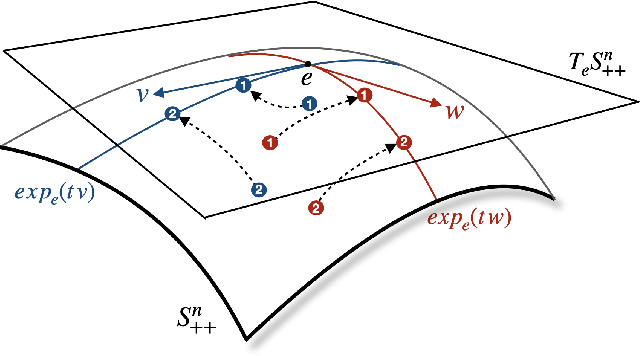
Abstract:Neuroimaging provides a critical framework for characterizing brain activity by quantifying connectivity patterns and functional architecture across modalities. While modern machine learning has significantly advanced our understanding of neural processing mechanisms through these datasets, decoding task-specific signatures must contend with inherent neuroimaging constraints, for example, low signal-to-noise ratios in raw electrophysiological recordings, cross-session non-stationarity, and limited sample sizes. This review focuses on machine learning approaches for covariance-based neuroimaging data, where often symmetric positive definite (SPD) matrices under full-rank conditions encode inter-channel relationships. By equipping the space of SPD matrices with Riemannian metrics (e.g., affine-invariant or log-Euclidean), their space forms a Riemannian manifold enabling geometric analysis. We unify methodologies operating on this manifold under the SPD learning framework, which systematically leverages the SPD manifold's geometry to process covariance features, thereby advancing brain imaging analytics.
Decoupled Doubly Contrastive Learning for Cross Domain Facial Action Unit Detection
Mar 12, 2025Abstract:Despite the impressive performance of current vision-based facial action unit (AU) detection approaches, they are heavily susceptible to the variations across different domains and the cross-domain AU detection methods are under-explored. In response to this challenge, we propose a decoupled doubly contrastive adaptation (D$^2$CA) approach to learn a purified AU representation that is semantically aligned for the source and target domains. Specifically, we decompose latent representations into AU-relevant and AU-irrelevant components, with the objective of exclusively facilitating adaptation within the AU-relevant subspace. To achieve the feature decoupling, D$^2$CA is trained to disentangle AU and domain factors by assessing the quality of synthesized faces in cross-domain scenarios when either AU or domain attributes are modified. To further strengthen feature decoupling, particularly in scenarios with limited AU data diversity, D$^2$CA employs a doubly contrastive learning mechanism comprising image and feature-level contrastive learning to ensure the quality of synthesized faces and mitigate feature ambiguities. This new framework leads to an automatically learned, dedicated separation of AU-relevant and domain-relevant factors, and it enables intuitive, scale-specific control of the cross-domain facial image synthesis. Extensive experiments demonstrate the efficacy of D$^2$CA in successfully decoupling AU and domain factors, yielding visually pleasing cross-domain synthesized facial images. Meanwhile, D$^2$CA consistently outperforms state-of-the-art cross-domain AU detection approaches, achieving an average F1 score improvement of 6\%-14\% across various cross-domain scenarios.
* Accepted by IEEE Transactions on Image Processing 2025. A novel and elegant feature decoupling method for cross-domain facial action unit detection
Beyond Overfitting: Doubly Adaptive Dropout for Generalizable AU Detection
Mar 12, 2025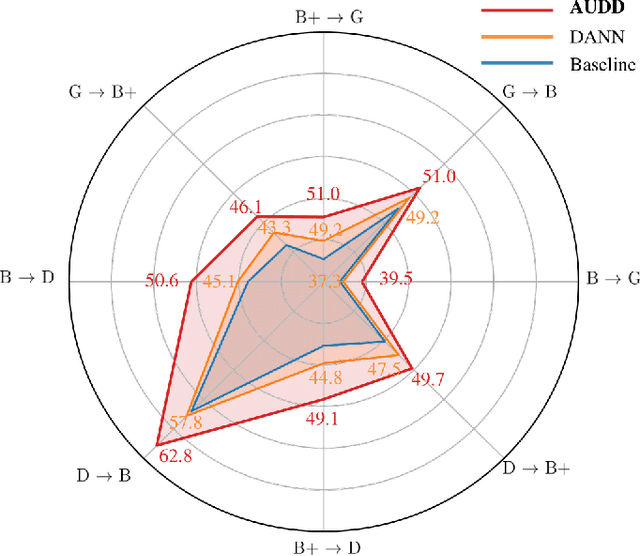
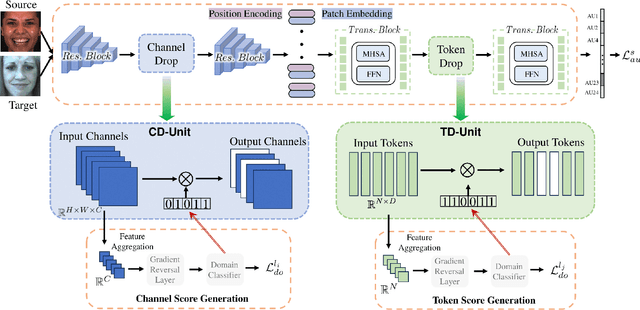
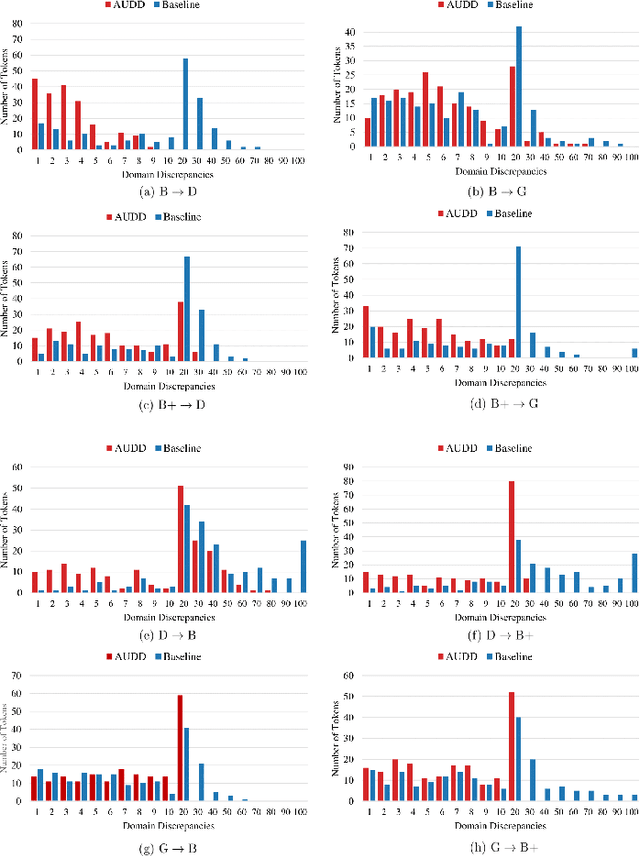
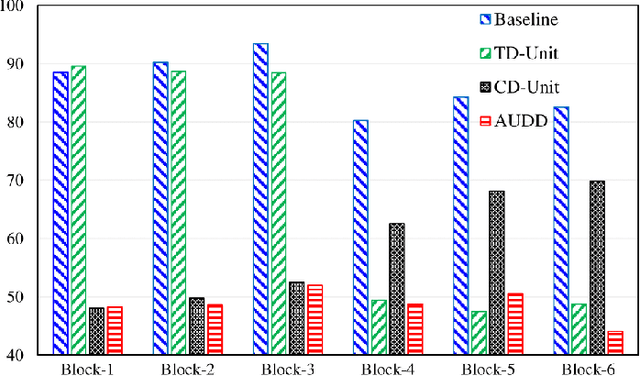
Abstract:Facial Action Units (AUs) are essential for conveying psychological states and emotional expressions. While automatic AU detection systems leveraging deep learning have progressed, they often overfit to specific datasets and individual features, limiting their cross-domain applicability. To overcome these limitations, we propose a doubly adaptive dropout approach for cross-domain AU detection, which enhances the robustness of convolutional feature maps and spatial tokens against domain shifts. This approach includes a Channel Drop Unit (CD-Unit) and a Token Drop Unit (TD-Unit), which work together to reduce domain-specific noise at both the channel and token levels. The CD-Unit preserves domain-agnostic local patterns in feature maps, while the TD-Unit helps the model identify AU relationships generalizable across domains. An auxiliary domain classifier, integrated at each layer, guides the selective omission of domain-sensitive features. To prevent excessive feature dropout, a progressive training strategy is used, allowing for selective exclusion of sensitive features at any model layer. Our method consistently outperforms existing techniques in cross-domain AU detection, as demonstrated by extensive experimental evaluations. Visualizations of attention maps also highlight clear and meaningful patterns related to both individual and combined AUs, further validating the approach's effectiveness.
* Accetped by IEEE Transactions on Affective Computing 2025. A novel method for cross-domain facial action unit detection
Decoding Human Attentive States from Spatial-temporal EEG Patches Using Transformers
Feb 06, 2025Abstract:Learning the spatial topology of electroencephalogram (EEG) channels and their temporal dynamics is crucial for decoding attention states. This paper introduces EEG-PatchFormer, a transformer-based deep learning framework designed specifically for EEG attention classification in Brain-Computer Interface (BCI) applications. By integrating a Temporal CNN for frequency-based EEG feature extraction, a pointwise CNN for feature enhancement, and Spatial and Temporal Patching modules for organizing features into spatial-temporal patches, EEG-PatchFormer jointly learns spatial-temporal information from EEG data. Leveraging the global learning capabilities of the self-attention mechanism, it captures essential features across brain regions over time, thereby enhancing EEG data decoding performance. Demonstrating superior performance, EEG-PatchFormer surpasses existing benchmarks in accuracy, area under the ROC curve (AUC), and macro-F1 score on a public cognitive attention dataset. The code can be found via: https://github.com/yi-ding-cs/EEG-PatchFormer .
EmT: A Novel Transformer for Generalized Cross-subject EEG Emotion Recognition
Jun 26, 2024Abstract:Integrating prior knowledge of neurophysiology into neural network architecture enhances the performance of emotion decoding. While numerous techniques emphasize learning spatial and short-term temporal patterns, there has been limited emphasis on capturing the vital long-term contextual information associated with emotional cognitive processes. In order to address this discrepancy, we introduce a novel transformer model called emotion transformer (EmT). EmT is designed to excel in both generalized cross-subject EEG emotion classification and regression tasks. In EmT, EEG signals are transformed into a temporal graph format, creating a sequence of EEG feature graphs using a temporal graph construction module (TGC). A novel residual multi-view pyramid GCN module (RMPG) is then proposed to learn dynamic graph representations for each EEG feature graph within the series, and the learned representations of each graph are fused into one token. Furthermore, we design a temporal contextual transformer module (TCT) with two types of token mixers to learn the temporal contextual information. Finally, the task-specific output module (TSO) generates the desired outputs. Experiments on four publicly available datasets show that EmT achieves higher results than the baseline methods for both EEG emotion classification and regression tasks. The code is available at https://github.com/yi-ding-cs/EmT.
EEG-Deformer: A Dense Convolutional Transformer for Brain-computer Interfaces
Apr 25, 2024



Abstract:Effectively learning the temporal dynamics in electroencephalogram (EEG) signals is challenging yet essential for decoding brain activities using brain-computer interfaces (BCIs). Although Transformers are popular for their long-term sequential learning ability in the BCI field, most methods combining Transformers with convolutional neural networks (CNNs) fail to capture the coarse-to-fine temporal dynamics of EEG signals. To overcome this limitation, we introduce EEG-Deformer, which incorporates two main novel components into a CNN-Transformer: (1) a Hierarchical Coarse-to-Fine Transformer (HCT) block that integrates a Fine-grained Temporal Learning (FTL) branch into Transformers, effectively discerning coarse-to-fine temporal patterns; and (2) a Dense Information Purification (DIP) module, which utilizes multi-level, purified temporal information to enhance decoding accuracy. Comprehensive experiments on three representative cognitive tasks consistently verify the generalizability of our proposed EEG-Deformer, demonstrating that it either outperforms existing state-of-the-art methods or is comparable to them. Visualization results show that EEG-Deformer learns from neurophysiologically meaningful brain regions for the corresponding cognitive tasks. The source code can be found at https://github.com/yi-ding-cs/EEG-Deformer.
MASA-TCN: Multi-anchor Space-aware Temporal Convolutional Neural Networks for Continuous and Discrete EEG Emotion Recognition
Aug 30, 2023
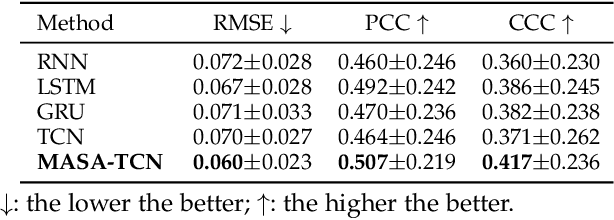


Abstract:Emotion recognition using electroencephalogram (EEG) mainly has two scenarios: classification of the discrete labels and regression of the continuously tagged labels. Although many algorithms were proposed for classification tasks, there are only a few methods for regression tasks. For emotion regression, the label is continuous in time. A natural method is to learn the temporal dynamic patterns. In previous studies, long short-term memory (LSTM) and temporal convolutional neural networks (TCN) were utilized to learn the temporal contextual information from feature vectors of EEG. However, the spatial patterns of EEG were not effectively extracted. To enable the spatial learning ability of TCN towards better regression and classification performances, we propose a novel unified model, named MASA-TCN, for EEG emotion regression and classification tasks. The space-aware temporal layer enables TCN to additionally learn from spatial relations among EEG electrodes. Besides, a novel multi-anchor block with attentive fusion is proposed to learn dynamic temporal dependencies. Experiments on two publicly available datasets show MASA-TCN achieves higher results than the state-of-the-art methods for both EEG emotion regression and classification tasks. The code is available at https://github.com/yi-ding-cs/MASA-TCN.
 Add to Chrome
Add to Chrome Add to Firefox
Add to Firefox Add to Edge
Add to Edge